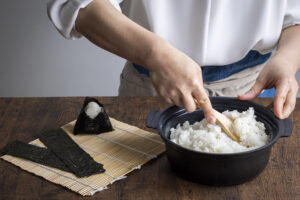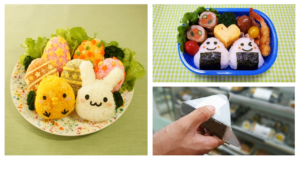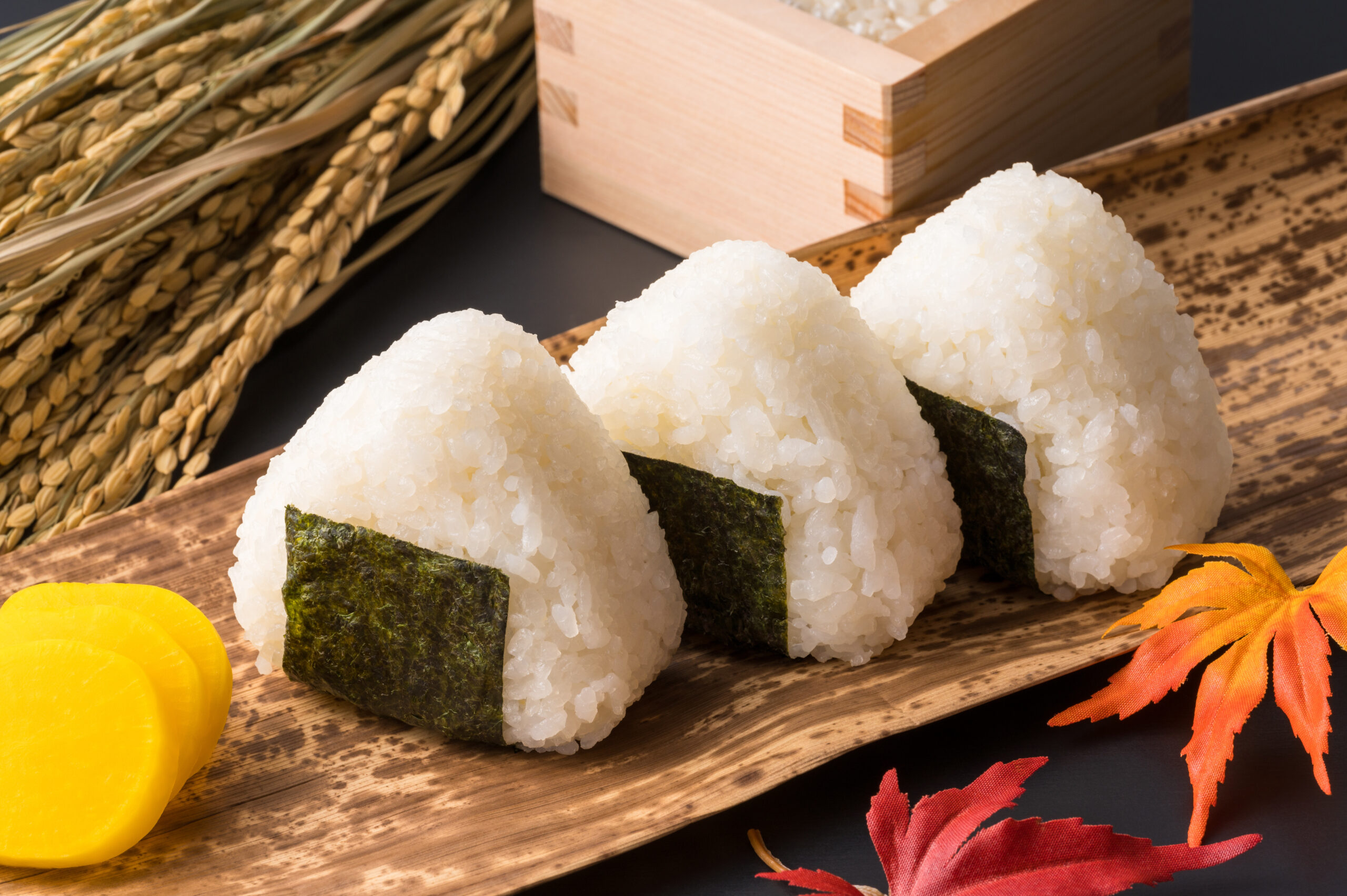Within the palm-sized triangle lies a tapestry of Japanese memories and stories. To Japanese people, onigiri is far more than just food. A single bite can bring back fond recollections of family moments, the joy of picnics, or the warmth of a cherished snack enjoyed during a journey.
The act of gently wrapping favorite ingredients in freshly steamed rice carries with it a sense of love, gratitude, and sometimes even silent wishes. Onigiri, for the Japanese, is like a magical creation that shapes invisible emotions into something tangible.
Yet, the power of onigiri extends far beyond this. Today, it has transcended Japan’s borders, evolving into new forms with avocado, spices, and other global flavors in foreign lands. Onigiri trends, like character-shaped “kawaii” designs or intricate “onigiri art” showcased on social media, speak to its depth and boundless possibilities.
Onigiri is more than a dish; it is the embodiment of Japan’s culture and heart. Let us take you on a journey to discover the unique charm of this small but meaningful creation.
Onigiri has long held a special place in Japanese life. It began as simple rice balls, made with freshly cooked rice and seasoned with salt. In ancient times, during the Heian period, they were known as tonjiki, a portable food for travelers. Later, in the Sengoku era, samurai used them as sustenance on the battlefield. Known then as nigiri-meshi, their shapes—triangular, cylindrical, or round—varied by region and purpose.
Onigiri symbolizes Japan’s deep-rooted rice culture. The act of shaping rice with one’s hands itself is imbued with gratitude for the ingredients and an expression of love for family. It is not merely food; it is a “bond of the heart.”
Onigiri may appear simple, but within lies incredible depth and difficulty. The texture and flavor of onigiri are significantly influenced by the delicate balance of pressure applied while shaping warm, freshly cooked rice. Press too hard, and it becomes dense; too lightly, and it crumbles apart. Every element—how the rice is cooked, the amount of salt used, the way the seaweed is wrapped—comes together to determine its perfection.

There’s also an art to selecting and placing the filling. For example, placing a pickled plum (umeboshi) in the center creates a uniform tartness, while positioning it off-center introduces an element of surprise as you eat. Making onigiri is not just a culinary act; it is a craft that requires care and understanding of the ingredients, an ultimate expression of culinary simplicity and sophistication.
Simplicity is what makes onigiri deceptively complex. While anyone can shape rice into a ball, mastering the subtleties of the craft is a different matter entirely. Every household has its own flavors and methods, making even the same fillings feel distinct. This unique charm is part of what makes onigiri so enchanting.
Onigiri, though simple, boasts surprising diversity. Traditional fillings such as pickled plum (umeboshi), kelp (konbu), and salted salmon (sake) were not only tasty but also served the practical purpose of preserving the rice. Other widely loved fillings include bonito flakes (okaka), spicy cod roe (mentaiko), and pollock roe (tarako). In modern times, Western-inspired flavors like tuna mayonnaise and shrimp mayonnaise have also become staples.
Regional variations add even more richness. In Okinawa, “pork tamago onigiri” features spam and tamagoyaki (Japanese omelet). Niigata, a renowned rice-producing region, offers luxurious fillings like fish roe or locally made miso. Kyoto is known for chirimen sansho (seasoned baby sardines with sansho pepper), while the Tohoku region boasts harako-meshi (salmon and salmon roe). Onigiri allows people to experience the flavors and culture of a region in one delicious bite.
In modern times, onigiri has become widely available not only in households but also in convenience stores, supermarkets, and even specialized shops. Convenience store onigiri, in particular, is highly popular for its variety and ease of access. Innovations like patented packaging that keeps the seaweed crisp until the moment of eating showcase how technology has further elevated the experience.

Meanwhile, “onigiri art” and “character onigiri” have gained popularity on social media. These intricately designed onigiri, often featuring adorable characters or vibrant ingredients, bring a playful element to lunchboxes and brighten events or parties. This trend reflects not only the joy of eating onigiri but also the creativity and fun of making them.
Onigiri is a special food that carries the warmth of the hands that shape it. It is a symbol of family love, a loyal companion on journeys, and a beloved representation of Japanese cuisine to the world. One bite brings a sense of nostalgia and comfort—a mysterious power that will undoubtedly continue to accompany our lives for generations to come.




コメント